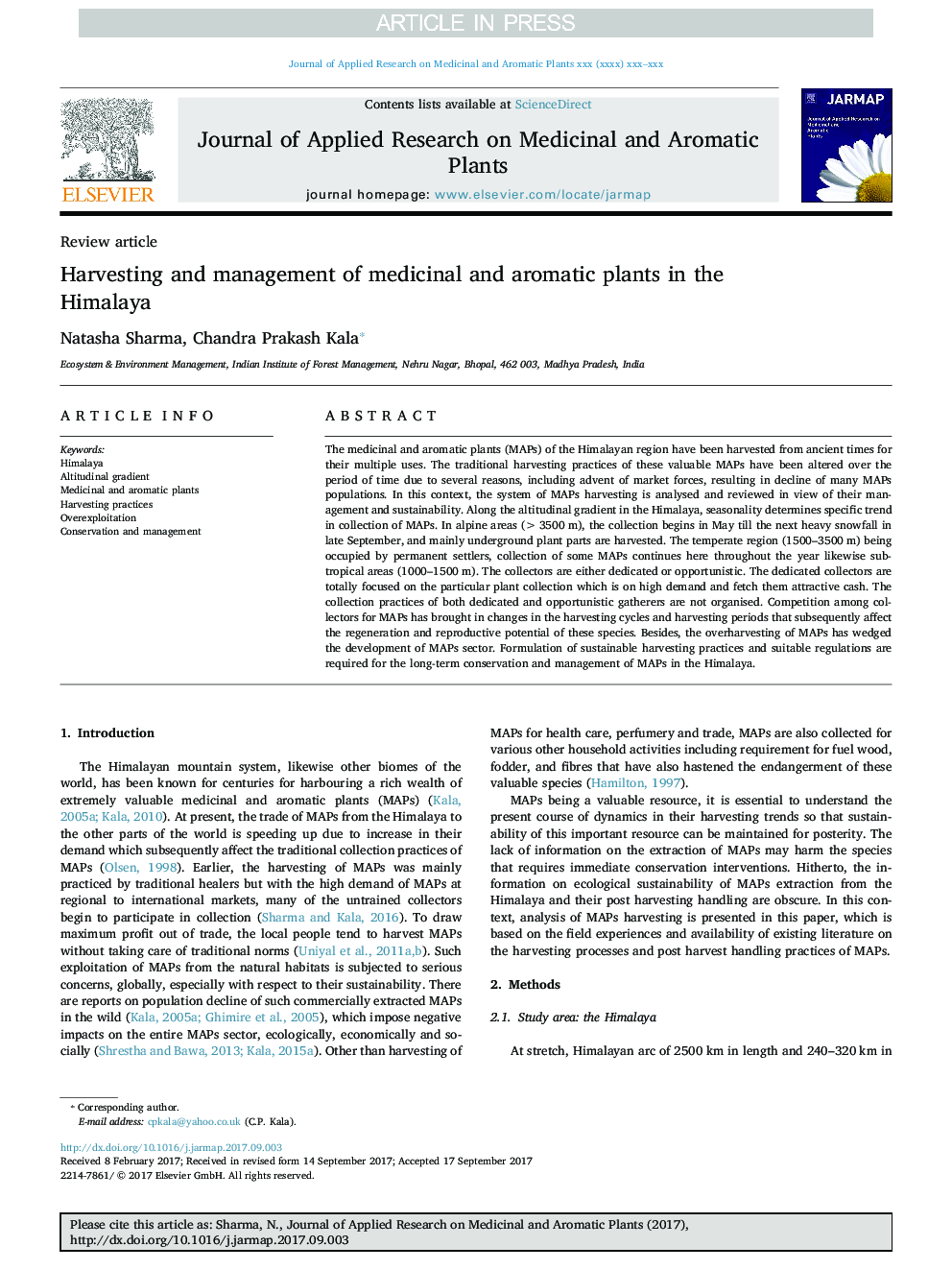| Article ID | Journal | Published Year | Pages | File Type |
|---|---|---|---|---|
| 8692688 | Journal of Applied Research on Medicinal and Aromatic Plants | 2018 | 9 Pages |
Abstract
The medicinal and aromatic plants (MAPs) of the Himalayan region have been harvested from ancient times for their multiple uses. The traditional harvesting practices of these valuable MAPs have been altered over the period of time due to several reasons, including advent of market forces, resulting in decline of many MAPs populations. In this context, the system of MAPs harvesting is analysed and reviewed in view of their management and sustainability. Along the altitudinal gradient in the Himalaya, seasonality determines specific trend in collection of MAPs. In alpine areas (>3500â¯m), the collection begins in May till the next heavy snowfall in late September, and mainly underground plant parts are harvested. The temperate region (1500-3500â¯m) being occupied by permanent settlers, collection of some MAPs continues here throughout the year likewise sub-tropical areas (1000-1500â¯m). The collectors are either dedicated or opportunistic. The dedicated collectors are totally focused on the particular plant collection which is on high demand and fetch them attractive cash. The collection practices of both dedicated and opportunistic gatherers are not organised. Competition among collectors for MAPs has brought in changes in the harvesting cycles and harvesting periods that subsequently affect the regeneration and reproductive potential of these species. Besides, the overharvesting of MAPs has wedged the development of MAPs sector. Formulation of sustainable harvesting practices and suitable regulations are required for the long-term conservation and management of MAPs in the Himalaya.
Keywords
Related Topics
Life Sciences
Agricultural and Biological Sciences
Agricultural and Biological Sciences (General)
Authors
Natasha Sharma, Chandra P. Kala,
